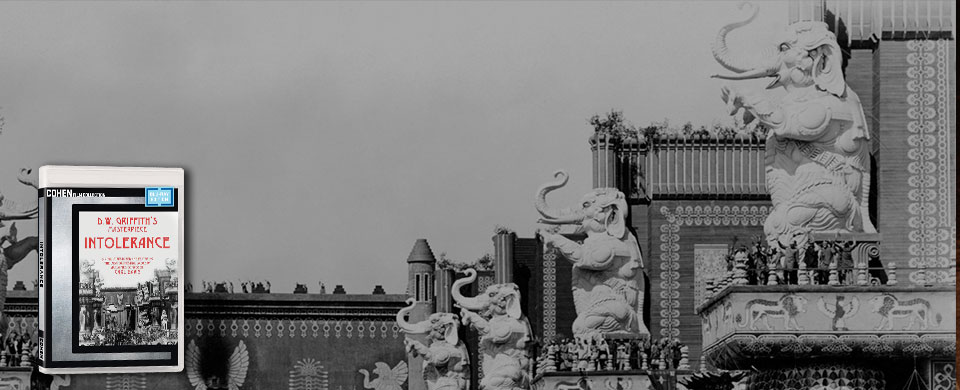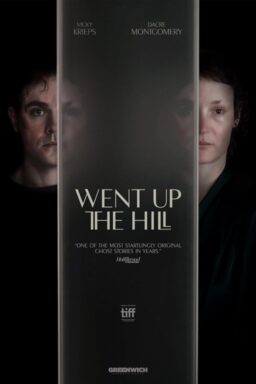“The Best Years of Our Lives” (Warner)

Here’s a terrific, important classic, getting a long-overdue, responsible-studio-overseen upgrade from an old “Samuel Goldwyn Collection” label DVD that, as I recollect, was really a noise-fest; every time a guy in a suit turned his back to the camera, the shot would fill with a reflected gleam of video schmutz that was endemic to an indifferent VHS picture. So I was thrilled by the solid black-and-white of this Blu-ray right away. Some close observers of the disc have noted that some of its shots are more tightly cropped than those of prior video versions. This is true. To what extent does it matter? From my perspective, the crucial point is that motion pictures MOVE. If you’re fretting about the compromised composition, rather than watching and listening to the interplay between Dana Andrews, Fredric March and Harold Russell as they look down at their home town from the plane bringing them there, then you’re not really experiencing the movie. So while it might have been nice for some of the shots to have a little more, um, headroom (and my understanding here is that first-rate materials for this disc were difficult to come by), I can’t say that this disc is really a disappointment. The cropping issues don’t compromise the emotional power of the film, which remains really substantial. —A-
“Big Star: Nothing Can Hurt Me” (Magnolia)

This is a nicely-presented version of an informative but not particularly inspired documentary about an inspired and rather ill-fated rock and roll band. As a fan of said band, I’m really glad to have seen it and to own this Blu-ray. But I have to say that the whole package really represents a missed opportunity. There’s a lot of talk in the movie proper, and in some of the deleted scenes that make up the supplements package, about the sonic brilliance of John Fry, the Memphis-based entrepreneur and engineer responsible for the signature sound of the first two Big Star records. Given the amazing audio capabilities of the Blu-ray format, this disc would have been a perfect spot on which to put some high-definition Big Star audio, including alternate mixes, maybe even an interactive feature allowing the user to isolate certain tracks, and so on. I understand that Magnolia isn’t Criterion or even Discipline Global Mobile for that matter, but since the materials on the disc bring up the issue in the first place, I can’t be blamed for wishing there had been some tech follow through. Maybe John Fry will initiate something in this format himself. I would buy it. Twice. —B
“The House on Straw Hill” (Severin)

A ridiculously overwrought 1976 “psychological” “thriller” that got caught up in the outrage over “video nasties” in Great Britain back in the day. To paraphrase a user review on IMDB, The direction is lifeless, the characters are unpleasant, and the film has quite a few dead spots. But its animating instinct is so squalid that it practically qualifies as a piece of authentic sadistic cinema, and hence it really caught my interest. Udo Kier, looking super irritated and dubbed so to more convincingly sound like a dude from England, looks as if he’s trying to channel Martin Amis as he plays a nasty British novelist who’s all about boffing his model girlfriend and mysterious new secretary even as freshly slain corpses start turning up at the title property where he’s holed up to write. Remember when Rex Reed complained about “Willard” looking as if it had been shot through a Coke bottle? You don’t? Well never mind. Anyway, even when transferred from the best of materials (this is one of those exploitation items put together by a label that made a genuine effort to assemble the most complete, best-looking version) this movie really DOES look like it was shot through a Coke bottle—it’s got that greenish tinge. About 21 minutes into the movie some genuinely decayed footage creeps in, creating a nice throbbing effect. Again, the movie as a whole is rather remarkably tawdry (one of its female costars disowns it in one of the supplements), so it’s funny to hear, on the commentary track, these now harmless-sounding old British guys talking about their youths as makers of this squalid film. My normal-person-targeted grade notwithstanding, I found the package never not entertaining. —C+
“Intolerance” (Cohen)

There are more complete versions of this nearly 100-year-old film on home video. But this one, featuring a picture restoration of spectacular proportions, which I saw in its entirety when it was presented on the big screen at Film Forum earlier this year, is the most holy-moley beautiful in its wealth of detail, and in the way the action plays. I discussed the staggering modernity of this movie at my blog, here.
Another plus for this edition is it inclusion of fascinating feature-length versions of two of the four stories in director D.W. Griffith’s vision, the then-contemporary “The Mother and the Law” and “The Fall of Babylon.” While neither is meticulously restored or tinted, they’re both watchable, and as discrete films (they contain more material and different takes than the tales included in “Intolerance” do, and are differently structured as well, particularly the latter) they are rather amazing. (Although the stand-alone version of “The Fall of Babylon” isn’t as dirty as the one in the original with its undulating half-nude virgins and stuff.) A must-own. —A+
“The Whip and the Body” (Kino)

This 1963 supernatural thriller with amour fou / S&M overtones is one of the most fascinating Mario Bava pictures, and one of the hardest to see properly. Well do I remember getting a really wobbly letterboxed VHS version of this from Video Search of Miami back in the day. So for me this Blu-ray looks miraculous, even though the color itself, while luscious, can be said to show its age. Once you get used to that, and it should only take a few minutes, you can see the intoxicating dark beauty in this movie; it’s possibly the most consistently atmospheric of Bava’s films, a magnificent ENVIRONMENT to which the breathtakingly gorgeous Daliah Lavi contributes quite a bit. Three soundtracks are provided, and you should avoid the flat English language one at all costs; Tim Lucas’ ever-informative commentary explains why that’s kind of a shame, among other things. — A-












